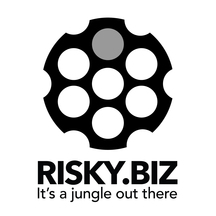The online environment is just like the real world, yet for some reason many consumers completely abandon their street smarts the second they fire up their browsers. When a leather-clad, toothless ruffian is walking up and down the street saying "give me $500 and I'll come back in an hour with a computer worth $1000," everyone knows not to trust him. Yet this is the same premise by which many scams, such as online auction fraud, are perpetrated.
The success of online criminals is harming consumer confidence.
In late 2008 I released the findings of the Consumer Trust and Confidence Online Survey [pdf] which was aimed at determining the level of trust and confidence of Australian Internet users within the online environment. The survey focused on e-commerce, social networking and online safety.
There were some interesting results. For example, 35 percent of respondents were more trusting of online transactions than two years ago. That sounds great until you realise 65 percent were either less trusting or had the same level of trust as two years prior.
Considering the increasing value and importance to the Australian economy the Internet plays, these statistics should ring alarm bells for anyone with a vested interest in online commerce.
Let's dig a little deeper.
The two most important factors considered by survey respondents when considering purchasing goods and services online was the reputation of the merchant and the payment method. Now we have some actionable information that tells us organisations must boost their reputation to bolster consumer confidence. Here's how:
- Be transparent -- give honest and open responses to customer questions and feedback
- Be flexible -- recognise change in systems and behaviour and implement swiftly
- Establish a reputation system -- it's a popular feature for eBay transactions
- Reflect reality - customers (and the media) are smarter than you think [They sure are.. ;) -- ed], they can sniff out a fake quickly.
Which leads into payment methods. While plenty of organisations abide by the Payment Card Industry Data Security Standards, some just don't. Media reporting of e-commerce organisations that have been compromised with the loss of customer credit card and personal information is a weekly occurrence.
But it's not just targeted hacks that are causing problems, there are far simpler forms of fraud. Consumers have proven willing to send payment for non-existent goods to unknown beneficiaries in international destinations via money transfer systems like Western Union.
Why do consumers engage in this risky behaviour? Maybe it's because online consumers are usually at home in a relaxed and comfortable environment where they can't see the normal visual cues that make us suspicious. Like the guy who's trying to sell you the Blu-ray player is covered in prison ink and has no teeth.
In a real world transaction their radar is far better attuned to detecting the potential for fraud.
The successful integration of e-commerce into the Australian economy is dependent upon the level of trust and confidence consumers have in the digital environment.
Developing new kinds of commercial activities utilising the Internet hinges on assuring consumers that their use of networked services is secure and reliable, that their transactions are safe and that they will be able to verify information about transactions and transacting parties. There are too many organisations that have a commercial interest in establishing customer trust and confidence in online technologies for this not to be taken seriously.
Nigel Phair was the Team Leader of Investigations for the Australian High Tech Crime Centre from 2003 to 2007 and the author of Cybercrime: The Reality of the Threat. He is an active cyber crime analyst.









